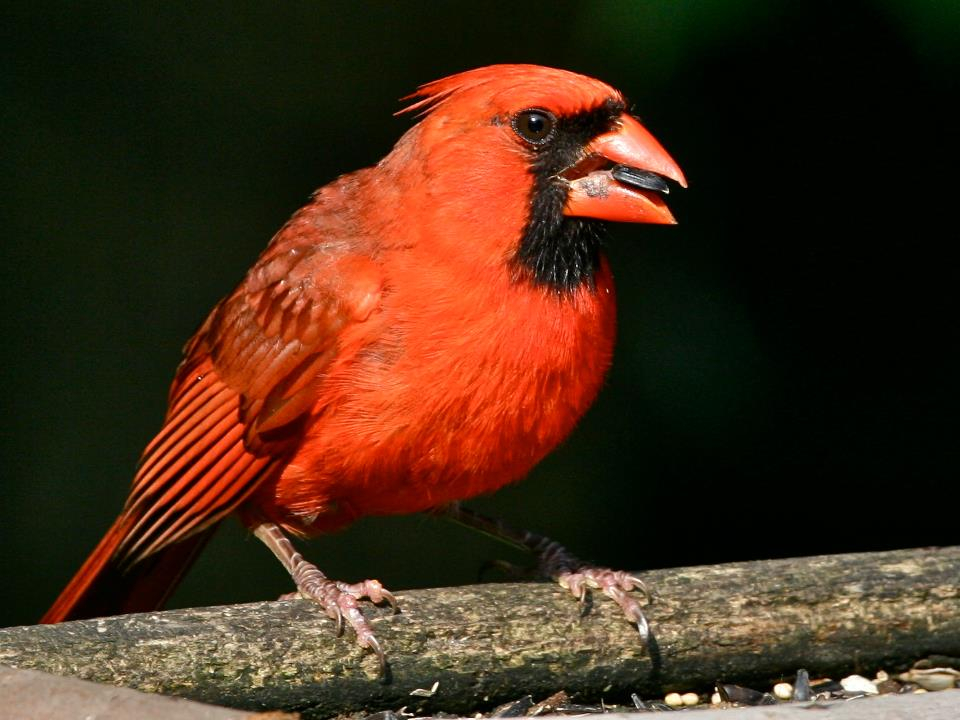
22 February 2022
Despite recurring winter weather we are more than halfway to spring and the birds know it. As their bodies prepare for the breeding season they develop brighter feathers, skin and beaks. Here are two backyard birds who make this transformation. One turns redder, the other loses stars.
Northern cardinals (Cardinalis cardinalis) molt from July to October, changing out their old feathers for new. At first the male doesn’t look bright red because the very tips of his new feathers are actually gray. You can see the gray feather tips on his back in the photo below.
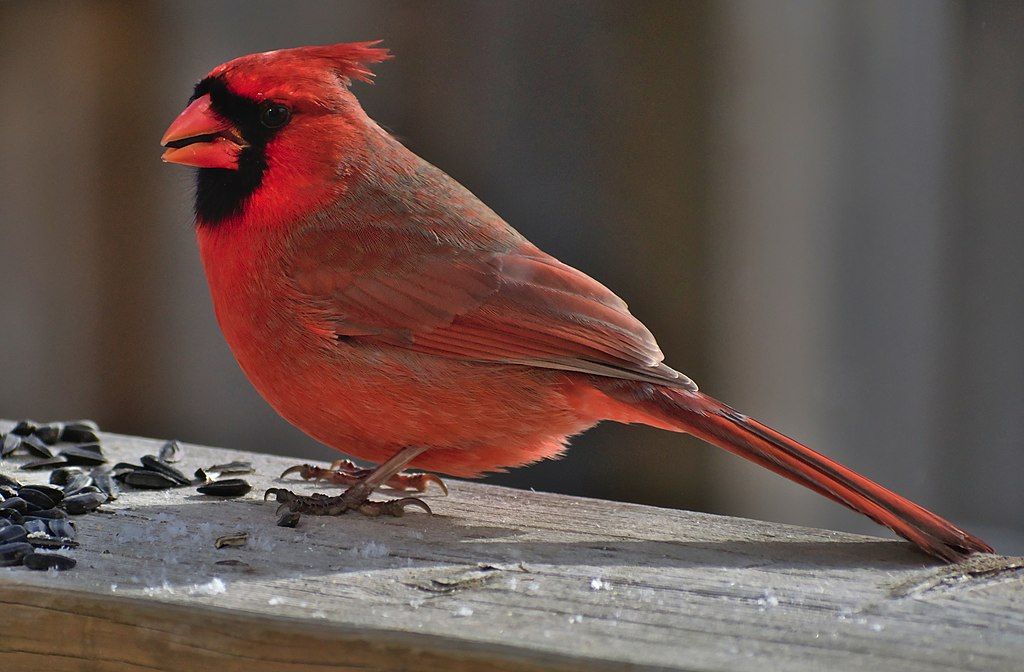
By mid-winter the gray tips wear off and the male cardinal becomes brilliant red for the breeding season.
Cardinals get their color from what they eat so diet plays a part and there are regional and habitat differences that affect the color. But no matter where they live, male cardinals turn redder in winter.
European starlings (Sturnus vulgaris) have a similar strategy for changing into breeding plumage. When their feathers are new in autumn each one is tipped with white so their bodies appear to be sprinkled with stars — hence the name “starling.” This close up shows that on new feathers the stars are tiny V’s on the feather tips.
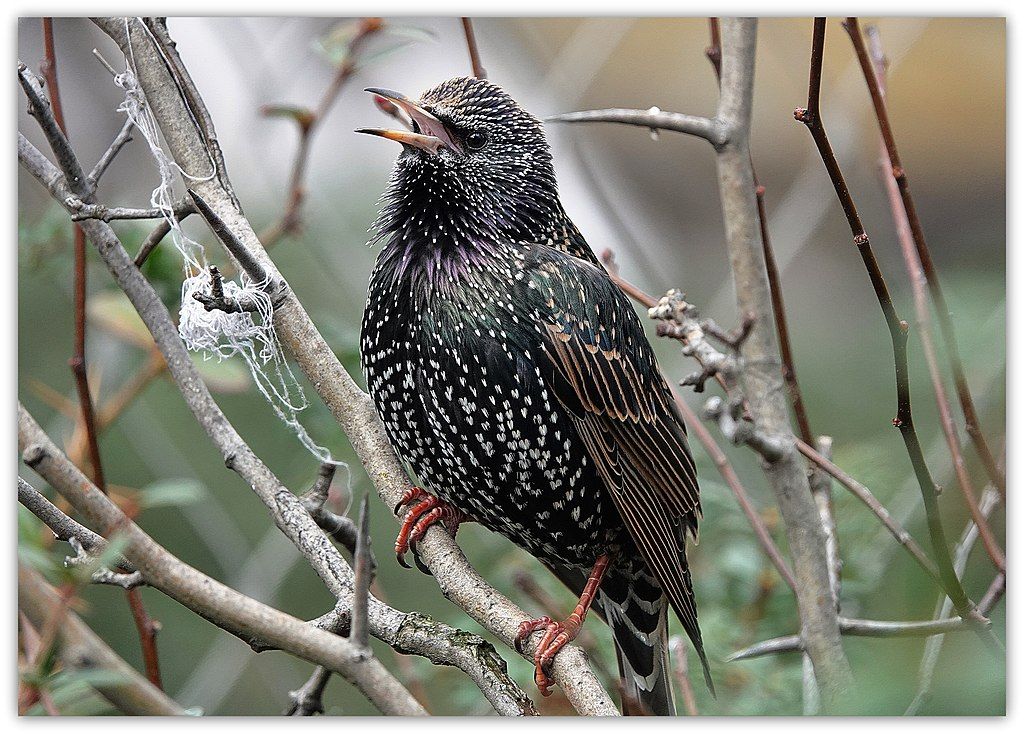
Over the winter the white tips wear off, especially on their head and breast feathers. By the time it’s breeding season their faces and chests are shiny, sleek and iridescent. Starlings lose their stars in the spring.
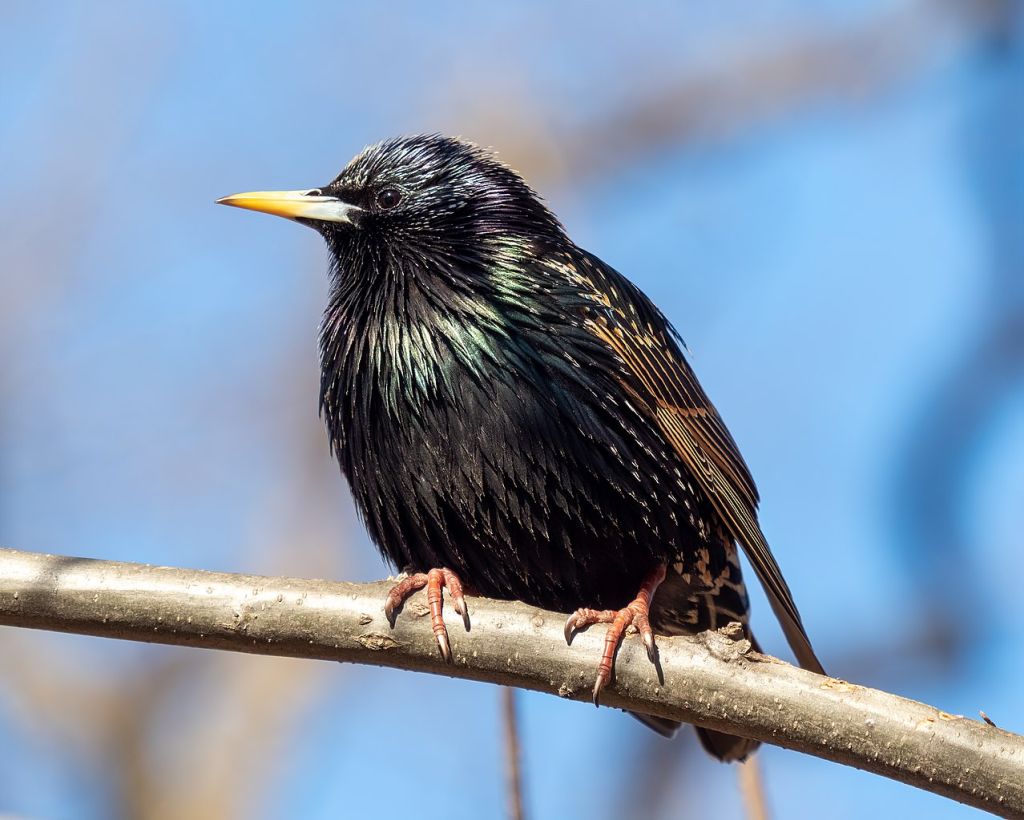
There is one more transformation that starlings make that will tell you which are male and female.
In the winter starlings’ beaks are dark brown but turn bright yellow in spring. You can tell the difference between male and female by looking at the color at the base of their beaks — the part closest to their faces.
Just like the baby colors — girls are pink, boys are blue. You can see it with binoculars.
Here’s a side-by-side comparison. The blue on the male at left is easiest to see. The pink on the female at right is pale and takes more effort to figure out.
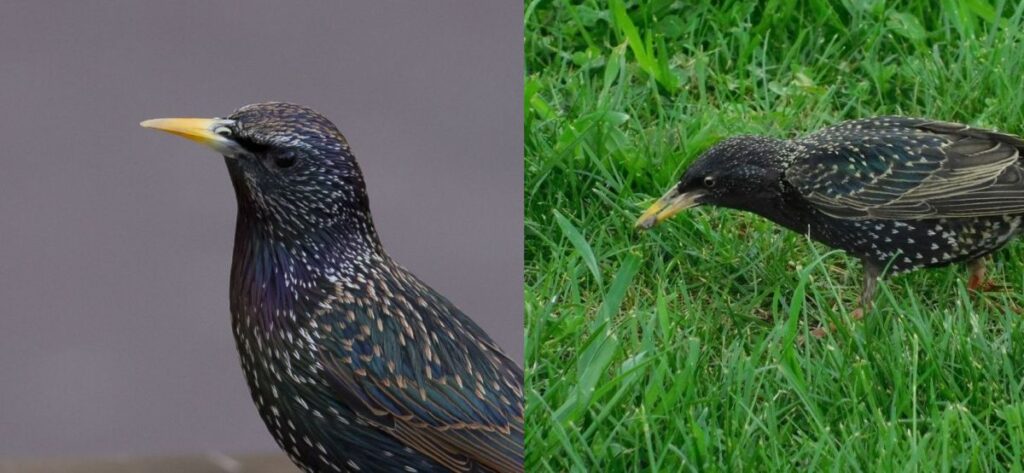
(Cardinal photo by Chuck Tague. Starling photos from Wikimedia Commons; click on the captions to see the originals)